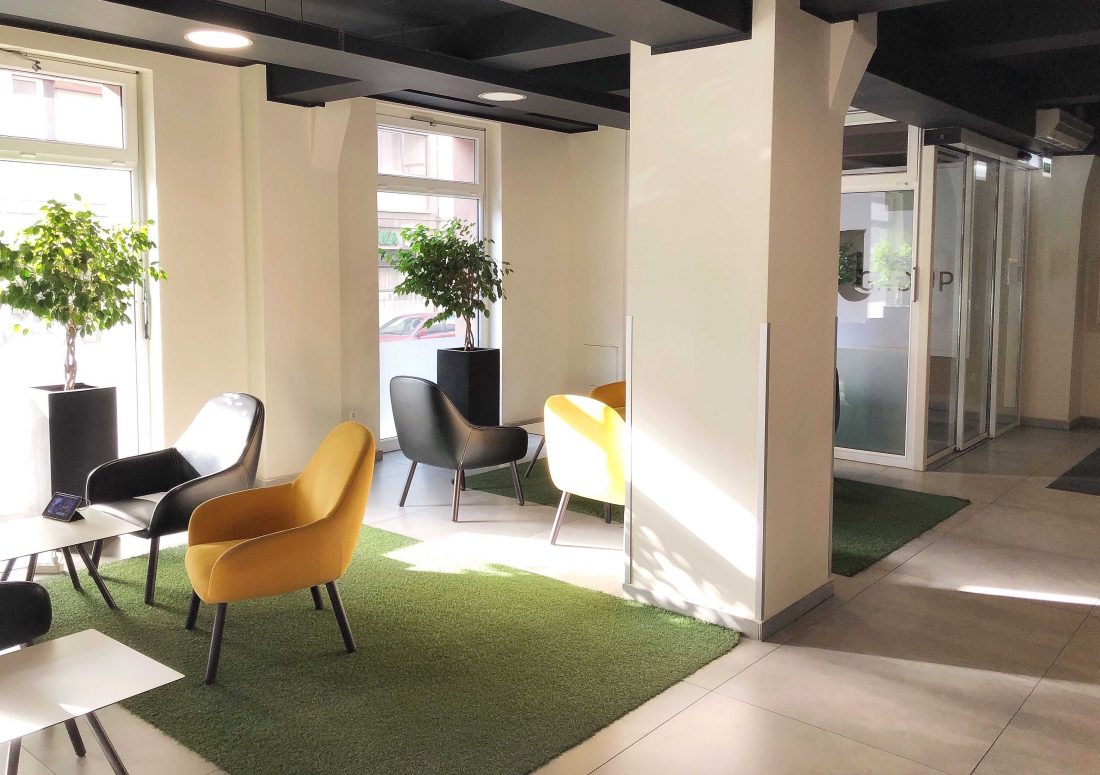Living that eco-friendly or sustainable lifestyle isn’t just limited to your home, take it to the office too!
While we are making more conscious decisions as consumers to head in a more eco-friendly direction, from what we use in our bathrooms to the way we cook at home, the same can’t be said when it comes to our working lives. One would think that since we spend most of our waking days working, that we would put more effort into making our workspaces or offices more environmentally-friendly.
On that note, if you’re looking to up your green credentials in the office, here are 6 easy tips to implement that will get you that one step closer to a greener working space.
Go green on office supplies and cutlery
 Instead of falling victim to single-use cups, plates, and cutlery, stock the office pantry with mugs, glasses, dishes, cutlery, and other kitchen essentials to cut down on waste. Instead of throwing away those plastic takeaway boxes, you can even wash them and keep them in the office pantry, for days when you forget to bring your own lunchbox to work.
Instead of falling victim to single-use cups, plates, and cutlery, stock the office pantry with mugs, glasses, dishes, cutlery, and other kitchen essentials to cut down on waste. Instead of throwing away those plastic takeaway boxes, you can even wash them and keep them in the office pantry, for days when you forget to bring your own lunchbox to work.
As for office supplies, try looking out for green products such as staple-less staplers, refillable pens, natural cleaning products, and post-consumer content.
If you don’t need to, don’t print it
 Keep things digital, whenever possible. Make use of external hard drives or cloud storage to keep your records, instead of filling up file cabinets – only to have them eventually become a forgotten breeding ground for dust bunnies. Instead of printing out digital documents for review, get into the habit of using projectors or shared screens. Only print documents that are absolutely necessary, and if you do end up with printed scraps, reuse them for notes.
Keep things digital, whenever possible. Make use of external hard drives or cloud storage to keep your records, instead of filling up file cabinets – only to have them eventually become a forgotten breeding ground for dust bunnies. Instead of printing out digital documents for review, get into the habit of using projectors or shared screens. Only print documents that are absolutely necessary, and if you do end up with printed scraps, reuse them for notes.
Bring a desk plant
 Decorating the office or your desk with lush, green plants isn’t just an interior design tip, it’s also a great way to improve the air quality and overall mood in the office. This is especially beneficial if your windows need to be constantly kept closed or if your office area is often exposed to pollution and noise. Plants will fill your office with more oxygen while offsetting any chemicals released into the air, giving you a cleaner and fresher space for you to work in.
Decorating the office or your desk with lush, green plants isn’t just an interior design tip, it’s also a great way to improve the air quality and overall mood in the office. This is especially beneficial if your windows need to be constantly kept closed or if your office area is often exposed to pollution and noise. Plants will fill your office with more oxygen while offsetting any chemicals released into the air, giving you a cleaner and fresher space for you to work in.
Mind your energy consumption
 It goes without saying that before the last person leaves the office, all electronics and main switches should be turned off. If you don’t already know, leaving your devices on standby actually accounts for about 1% of global carbon dioxide emissions. Since voltage transformers consume energy, unplug any unused chargers to avoid ‘electrical leakage’.
It goes without saying that before the last person leaves the office, all electronics and main switches should be turned off. If you don’t already know, leaving your devices on standby actually accounts for about 1% of global carbon dioxide emissions. Since voltage transformers consume energy, unplug any unused chargers to avoid ‘electrical leakage’.
If your office is blessed with large windows that receive a sufficient amount of sunlight, make use of them on bright days instead of switching on the lights.
Read more: 6 easy ways to reduce your digital carbon footprint
Rethink the traditional office
 Ever since the COVID-19 pandemic, companies all over the world have begun to rethink their working real estate, and implementing alternate work days or even remote working out of health and safety concerns. Telecommuting also benefits in greatly reducing carbon emissions by reducing the daily commute to-and-from the office, while reducing costs for rent, energy consumption, and supplies. Of course, this would require a great amount of discipline and communication within the company.
Ever since the COVID-19 pandemic, companies all over the world have begun to rethink their working real estate, and implementing alternate work days or even remote working out of health and safety concerns. Telecommuting also benefits in greatly reducing carbon emissions by reducing the daily commute to-and-from the office, while reducing costs for rent, energy consumption, and supplies. Of course, this would require a great amount of discipline and communication within the company.
However, if your occupation doesn’t allow remote working, consider car sharing, public transport, or even walking (if you live nearby) to reduce your carbon footprint.
Be mindful of your trash
 The office is probably one of the best places to start separating your papers from your plastics, especially when it comes to food and snack wrappers, and mail. If placing an entire set of recycling containers takes up too much room in the office, try placing individual recycling boxes in strategic locations, like paper near the printers, plastics in the pantry, and a general waste box in the common area. You should also store food scraps and coffee grounds in a separate container, which can be used as compost.
The office is probably one of the best places to start separating your papers from your plastics, especially when it comes to food and snack wrappers, and mail. If placing an entire set of recycling containers takes up too much room in the office, try placing individual recycling boxes in strategic locations, like paper near the printers, plastics in the pantry, and a general waste box in the common area. You should also store food scraps and coffee grounds in a separate container, which can be used as compost.
Photos: Unsplash










